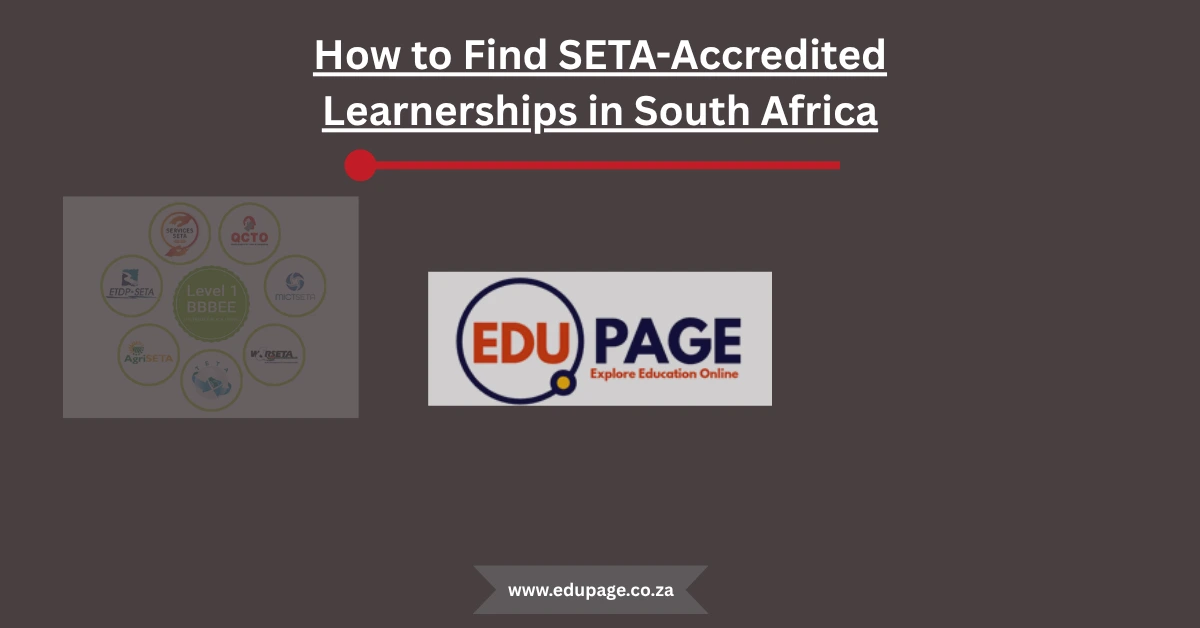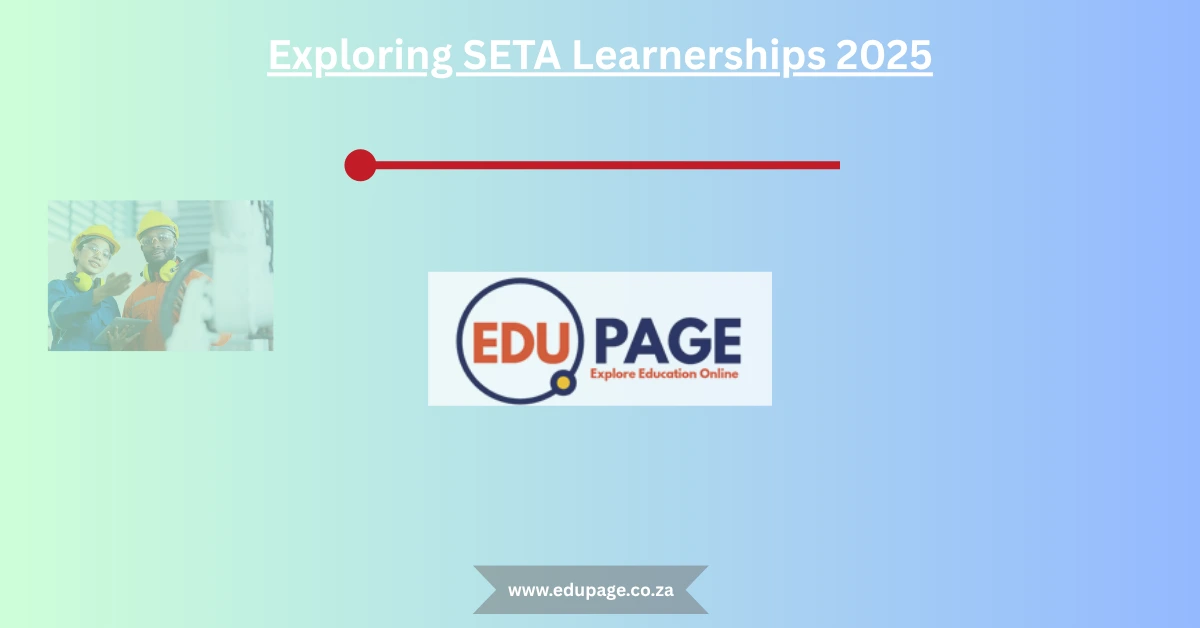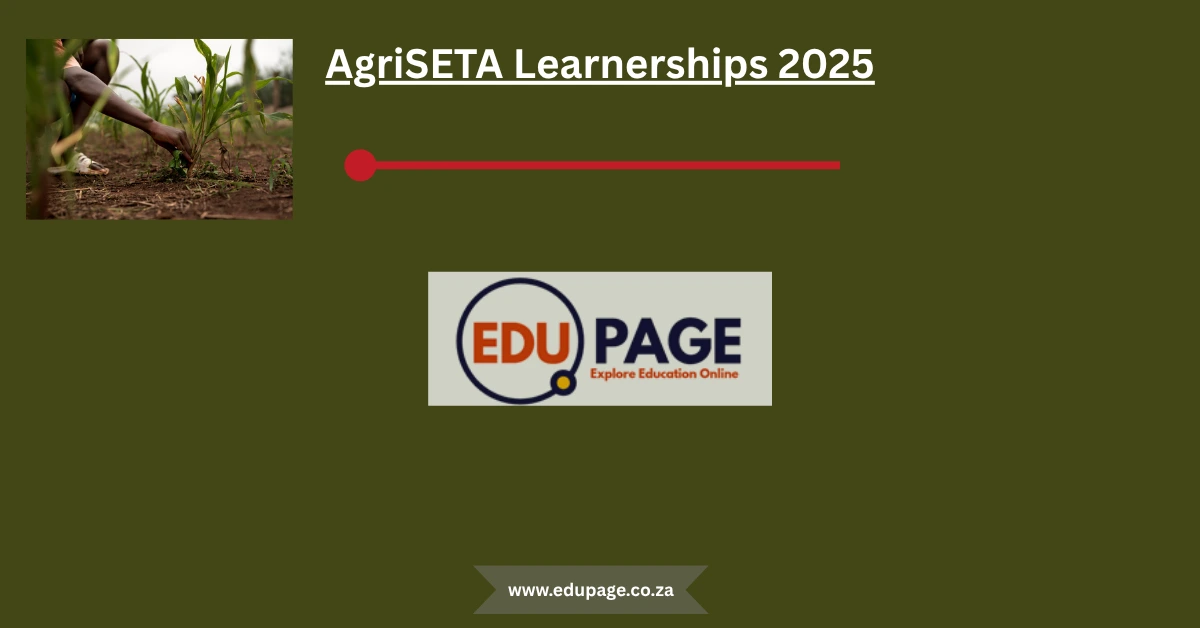How to Find SETA-Accredited Learnerships in South Africa: Your Complete 2025 Guide to Skill Development

Introduction: Unlocking Career Opportunities Through SETA Learnerships
In South Africa’s rapidly changing job market, gaining practical skills is more important than ever. Learnerships accredited by SETAs (Sector Education and Training Authorities) provide one of the most reliable and impactful ways to do that. These programmes combine theoretical learning with on-the-job experience, offering a structured, nationally recognised path toward employment—especially for young South Africans.
But how do you actually find these learnerships? With dozens of SETAs across different industries and hundreds of private and public organisations involved, the search can feel overwhelming. That’s where this guide comes in. Here, you’ll learn step-by-step how to discover SETA-accredited learnerships, identify the right ones for your career path, and apply with confidence.
Understanding the SETA System in South Africa
What Are SETAs?
SETA stands for Sector Education and Training Authority. South Africa currently has 21 different SETAs, each responsible for a specific economic sector. Their main job is to oversee skills development and ensure training programmes meet national standards through accreditation and regulation.
Some common examples of SETAs include:
- FASSET (Finance and Accounting Services)
- Services SETA (Customer Services and Retail)
- MERSETA (Manufacturing, Engineering and Related Services)
- HWSETA (Health and Welfare Sector)
What is a SETA-Accredited Learnership?
A learnership is a registered work-based learning programme that leads to a nationally recognised qualification. It includes both classroom instruction and practical workplace experience. All SETA-accredited learnerships:
- Are registered with the Department of Higher Education and Training (DHET)
- Lead to credits on the National Qualifications Framework (NQF)
- Are designed in partnership with employers and training providers
- Usually include a monthly stipend for the learner
Step 1: Know Yourself – Your Skills, Interests, and Goals
Self-Assessment: Where Do You See Yourself?
Before you begin applying for learnerships, do a personal skills audit:
- What are your strongest subjects?
- What kind of tasks do you enjoy?
- Are you more technical, creative, or people-oriented?
This helps match your personal strengths to relevant sectors. For example:
- Good with numbers? Consider FASSET.
- Enjoy working with people? Look into Services SETA or HWSETA.
- Like building or engineering? Explore MERSETA opportunities.
Understand South Africa’s Priority Skills
Review the National List of Occupations in High Demand, released by the Department of Higher Education. It includes:
- ICT skills (data analysis, coding)
- Construction and infrastructure
- Engineering
- Finance
- Health care
Choosing a learnership in one of these fields can improve your chances of employment post-completion.
Step 2: Where to Search for SETA Learnerships in 2025
1. Official SETA Websites
Each SETA publishes opportunities, approved training providers, and learnerships on its own site. Bookmark and check these often. A complete list of SETA websites is available at:
🔗 Department of Higher Education & Training – SETAs Directory
Tip: Use the search term “Makoya SETA learnerships” or visit
makoyajobs.co.zafor aggregated and updated SETA-accredited listings.
2. Job Portals and Career Websites
Leading South African job portals regularly post learnerships. Use targeted keywords like:
- “SETA-accredited learnership 2025”
- “[Industry name] learnership”
- “NQF level [X] learnership”
Reliable platforms include:
- Indeed.co.za
- Careers24.com
- PNet.co.za
- Makoyajobs.co.za (specialised in youth and SETA opportunities)
3. Company Career Pages
Many companies run learnerships directly and often advertise them on their own sites. Examples include:
- ABSA
- Transnet
- Sasol
- Shoprite
- Telkom
Follow their careers pages, sign up for email alerts, and engage with their social media platforms.
4. Government and Education Portals
Useful government sources include:
- Department of Labour: www.labour.gov.za
- Department of Higher Education: www.dhet.gov.za
Sign up for updates or newsletters on these portals. Some government departments even host their own learnerships in fields like administration, health, and community development.
Step 3: Applying for a Learnership the Right Way
Understand the Eligibility Criteria
Before applying, ensure you meet the minimum requirements. Most SETA learnerships require:
- South African citizenship
- A valid ID document
- A certain education level (usually Grade 10–12 or NQF Level 4)
- Age between 18 and 35 (unless stated otherwise)
Some programmes also prioritise youth, women, and persons with disabilities.
Tip: Have your documents ready:
- Certified ID copy
- Certified highest qualification
- Updated CV (tailored to the learnership)
- Motivation letter (explaining your goals and interest)
Writing a Compelling CV and Motivation Letter
Your CV should highlight:
- Any prior work or volunteer experience
- Relevant skills or school achievements
- Languages spoken
- References if available
Your Motivation Letter should:
- Explain your passion for the field
- Show how the learnership aligns with your goals
- Emphasise your willingness to learn and grow
Tip: Keep it short, professional, and personal. Aim for one page.
Step 4: Preparing for Assessments and Interviews
Most SETA-accredited learnerships involve:
- Screening tests (e.g., basic numeracy, literacy, or psychometric tests)
- Panel interviews (in person or online)
Sample Questions to Prepare For:
- Why do you want this learnership?
- What do you know about our company?
- What are your strengths and weaknesses?
- Describe a time you overcame a challenge.
Tip: Practice with a friend or record yourself to build confidence. Dress professionally—even for online interviews.
Step 5: Maximising Your Success Rate
Network Smartly
Let your network know you’re searching for a learnership:
- Teachers, community leaders, past employers, or mentors
- Industry WhatsApp groups
- LinkedIn and Facebook groups related to learnerships or youth employment
Attend Career Fairs:
- SETAs often participate in public events
- Bring copies of your CV and ask about learnership opportunities
Stay Consistent and Organised
Rejection is part of the journey. Don’t stop after your first few applications. Apply widely and keep track.
Create a simple spreadsheet with:
- Learnership applied for
- Closing date
- Required documents
- Follow-up steps
Step 6: Verifying Training Providers
Not all providers are created equal. To ensure your learnership is legitimate:
- Check if the provider is accredited by the relevant SETA
- Visit www.dhet.gov.za to cross-check their credentials
- Read learner reviews and testimonials
Red Flags to Avoid:
- Being asked to pay for the learnership
- No official SETA reference number
- Vague or missing programme details
Conclusion: Your Future Starts with a Single Application
SETA-accredited learnerships are more than just training—they are gateways to employment, growth, and economic empowerment. By following the steps in this guide—understanding your interests, searching smartly, applying professionally, and preparing effectively—you position yourself for real success in South Africa’s competitive job landscape.
Stay updated, stay motivated, and remember: Each application is a step toward your future career. Whether you’re aiming for finance, manufacturing, IT, or health care, there is a SETA learnership waiting for someone like you.
Final Tip: Bookmark trusted sites like
makoyajobs.co.zaor the Services SETA portal to always be in the loop with the latest accredited learnerships.



